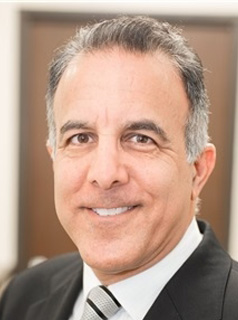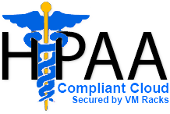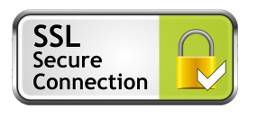Are Doctors Online Really Being Effective At Patient Management?
 How much time do your family and friends spend on the Internet on any given day? According to Nielsen, as of 2011, the average American spent a staggering 8 hours a month on just Facebook alone. Over half of the U.S. population has created social media profile as of 2012. The amount of unique users that WebMD gets in a given month usually tops 15 Million. Do you think that there is a market for adding an online component to your practice with these statistics?
How much time do your family and friends spend on the Internet on any given day? According to Nielsen, as of 2011, the average American spent a staggering 8 hours a month on just Facebook alone. Over half of the U.S. population has created social media profile as of 2012. The amount of unique users that WebMD gets in a given month usually tops 15 Million. Do you think that there is a market for adding an online component to your practice with these statistics?
For the Doctor Online, There's An App For That
With half of Americans owning smartphones these days, not only are they going online daily but they are staying connected throughout the day. Smart businesses are building applications for download to a customer's smartphone for them to create a greater interaction with their product or service, be able to get instant feedback on what is interesting their clients and readily communicate marketing information to them. The results of smartphone use in the marketplace is well documented. This palm-sized marketing tool is here to stay. What about for medical use?
There are diagnostic, and patient-monitoring tools being developed that the modern doctor can make use of via the patient's smartphone. These add-on apps will monitor your new heart patient's blood pressure, EKG and/or pulse and upload them to a website for you to print out reports. This lets you, the doctor, monitor your patients condition in real-time instead of waiting until the scheduled follow-up appointments. Seeing even minor changes in vital signs can alert the medical professional with the trained eye to any forthcoming complications before your patient presents him or herself at the Emergency Room or your office with acute symptoms.
Meet With Your Patient, The Specialist And You All In One Place
How many times have you said to your patient, "I spoke with Dr. X, who is a specialist and we discussed......" Through clumsy regurgitation you explain to your patient why they are seeing a specialist and what transpired during your phone time with them. Today you can take advantage of online video conferencing so that you all can be in the same "room" together discussing your patient's condition and what you and the specialist have decided that you are going to do to treat it. Making use of this technology gets the meeting to the point, cuts down dramatically on extra time having conversations individually that can be made with you all conversing at the same time and make way for valuable exam room time by not having a patient that doesn't need to be in your office sitting there waiting for you to come in and talk to them.
It used to be that test results and courses of action with them required an appointment in your office either with you or the nursing staff. Today these conversations can be done via video. Questions can still be asked and answered and the added bedside manor of a smiling face is still experienced, just from the comforts of the patient's home from behind a computer. Many patients feel better when they can see someone in person if they are not feeling well, this modern communication makes it possible.
Your Records Are In The Cloud
Online patient record storage has been ever migrating from the office filing cabinets and database to off-location storage for you to access from your computer. A "cloud" is a virtual database. Having records online eliminates the need for square footage in your office being taken up by a non-billable footprint known as patient records. With today's HIPPA laws, this is a much more effective way to protect patient data as these patient record storage technologies are typically uploaded to clouds that have specifically designed and secured with patient record information in mind. Extra perimeters are in place to ensure that information is safe from hackers. This is just another cost-effective reason to use technology in your office. What square footage you are not occupying with medical records can now be used by your practice to do something you can bill for. Wouldn't you rather be making more money per square foot than you are now? The money spent on monthly fees are dwarfed by income opportunities.
The New Frontier Is Telemedicine
The wave of the future is technology and the doctor will be able to take advantage of all that it has to offer. Embracing what is available to use today will train you, your staff and your patients to go to the Internet for the things you can serve up for them there. Adding new things in the future will be easier to implement since your practice will be used to taking advantage of your online ways to take care of them and communicate information. Start by offering online information on your website and a way for your patients to communicate with your office through online tools. You can post healthy Tips and Tricks, let them know that flu shots are in, remind them of why exercise is important and so on. Getting them to come to your website allows them to feel more connected to your practice and makes way for them to forward information they enjoy to friends and family to also read, possibly resulting in new patients through the sharing of information. Online tools can be very valuable marketing avenues if they are used consistently.
Telemedicine is Ubiquitous throughout the Healthcare Arena
Telemedicine is not a unique specialty of medicine; rather it represents the use of products and services that allow improved delivery of high quality care. In its purest sense, telemedicine is defined as a method employing electronic communications to convey information from site to site, in order to support enhancements in a patient’s clinical wellbeing. The tools employed may include a variety of communication modalities, such as multi-way video, e-mail, wireless devices and an evolving suite of electronic technology.
Telemedicine had humble roots. This method of practice began in the 1970s as a way to bring modern healthcare technology to remote regions of the world. More recently, as the technology evolves, telemedicine has become ubiquitous throughout the arena of healthcare. This pervasiveness is due to reduction of cost and the ability to meet industry standards (American Telemedicine Association, 2012).
Researchers Prove Electronic Data Reduces Costs and Clinic Visits
As early as 2003, technological researchers Chase and associates provided examples of how technology could be used instead of a regular clinic visit in the management of Type 1 diabetes. In this example (which relied on what would now be considered ancient technology), patients transmitted glucose levels electronically, via a modem, in order for the doctor to assess the condition. Although this example is clearly outdated, it illustrates the explosion of technology in the past 10 years. Provided below are highlights of this approach to healthcare technology.
Validity of Telemedicine Based on Ability to Meet Certain Standards
In order to demonstrate validity, telemedicine technology must meet particular standards, and several factors should be evaluated. These include: accurate digital data, secure electronic medical records, tools for remote analysis, secure and effective communication. An accurate collection of data in digital format involves tests and indications, such as blood glucose levels, blood pressure and HgbA1C levels, to be transmitted from patient to doctor. Furthermore, there must be incorporation of these data into a secure electronic patient record. For remote analysis, tools must exist to process the data. Finally, the system must promote effective, secure communication between all stakeholders.
Efficacy, Cost-Effectiveness and Practicality
As with other forms of medical practice, long term efficacy must be the goal of telemedicine. Control of glucose levels over the short term may or may not be associated with enhanced outcomes. In the case of type 1 diabetes, HbA1C is typically accepted as a surrogate for glucose control over time. In addition, evaluators should assess symptoms of hypoglycemia, as well as emergency room admissions that result from the condition. In the determination of the telemedicine intervention’s safety and efficacy, factors to consider involve overall control of the health condition.
With the realities of today’s economy, doctors are under tremendous pressure to ensure that all treatment interventions are cost-effective, as well as efficacious. Cost-effectiveness can be defined as the ratio resulting from the value of the telemedicine benefit, divided by the cost of the intervention. A ratio above 1 is favorable and revenue positive, whereas a ratio below 1 is not as desirable.
Telemedicine will most likely solve many problems, while simultaneously creating new issues. Physicians are among the professionals most resistant to adopting new technologies to their practice. Telemedicine may be more suited for incorporation into managed care programs where providers receive salaries versus conventional settings where physicians receive pay per visit. Further to that, an effective telemedicine platform should integrate into other programs, databases and peripherals.
The Many Services of Telemedicine
Telemedicine offers several types of services from the most common to the more advanced. The most common available service is phone consultations. Many people do not realize that when they speak to their doctor or a nurse on the phone, that call a type of telemedicine. In many cases, a psychiatrist, psychologist or a therapist will have telephone sessions instead of face-to-face meetings. Many times, with the use of a webcam, the provider and patient will communicate via video chat. This is not exactly the aim of telemedicine, but it is considered a type of telemedicine.
They are some services already being used that fall under telemedicine. A few of these include: consultations; completing history and physical paperwork (those 6 pages you must fill out on your first visit to the office); and on-call nurses (who answer questions and even advise you what to do in certain medical situations). Another service of telemedicine involves the pediatrician who provides phone care. Pediatricians take several calls to assess whether a child needs to be seen in the office or not, and they advise parents regarding home care or other needs. This is a common practice, as parents tend to overreact when children are sick or injured.
Research Finds that Patients are Satisfied with Online Healthcare
Telemedicine researchers Mair and Whitten (2000) point out that, while telemedicine may be alright for patients in certain circumstances, most research regarding patient satisfaction gives us more questions than answers. These researchers investigated both patient and doctor satisfaction. Their study design involved a systematic review of all the satisfaction studies regarding online medical professionals. These investigations were conducted globally and published between 1966 and 1998. The main outcome measure was quality of evidence about patient satisfaction. After identifying 32 studies, the investigators found that all 32 studies reported good levels of patient satisfaction. They concluded that research suggests that teleconsultation is practical for many patients, but certain issues regarding patient satisfaction warrant further investigation.
The Benefits and Drawbacks of Telemedicine
In 2005, researcher Hjelm investigated the benefits and drawbacks of telemedicine. His review was based on preliminary results, expert predictions, and physician scientist opinions. The benefits reported include: enhanced access to information, improved access to healthcare services, increased care delivery, and reduced healthcare costs. The main disadvantages Hjelm cited were: a breakdown in the patient-doctor relationship, issues with quality of health information, and bureaucratic and organizational difficulties. This led to the conclusion that telemedicine offered substantial benefits, but drawbacks needed to be eliminated.
Questions about Telemedicine that Still Need Answers
These are some of questions that both doctors and patients continuously ask about telemedicine. Researchers Mair and Whitten (2000) point out that the whole purpose of their review was to determine if telemedicine is right for the majority of doctors and patients. When surveyed about telemedicine, both stakeholders wanted to know:
• What limitations exist with telemedicine?
• Are initial consultations acceptable or should telemedicine only be for follow-up consultations?
• How does telemedicine affect the doctor/patient relationship?
• Will the doctor be able to explain findings, and will I fully understand what the doctor tells me?
• Will patients feel hurried and avoid the usual questions asked during a traditional visit?
• Will patients answer questions honestly?
• Will my doctor miss something he would have normally seen during a traditional office visit?
Final Thoughts
Telemedicine has come a long way in the past 50 years, with most of those strides being made in the last two decades. A number of telemedicine services are currently available, including on-call nurses, phone consultations, and paperwork completion. Once people are aware of the many benefits of telemedicine, the positive aspects of telemedicine will likely outweigh any negative ones, bringing a new and improved type of healthcare to the world!
References
Hjelm, NM (2005). Benefits and drawbacks of telemedicine. Journal of Telemedicine and Telecare, 11(2): 60 – 67. doi: 10.1258/1357633053499886J. Retrieved from: http://www.jtt.rsmjournals.com/content/11/2/60.short
Mair, F. & Whitten, P. (2000). Systematic review of studies of patient satisfaction with telemedicine.
BMJ, 320: 1517. doi: http://dx.doi.org/10.1136/bmj.320.7248.1517. Retrieved from:
http://www.bmj.com/content/320/7248/1517
Phys.org (2013). Cutting edge cloud network technology to enhance the fields of telemedicine. Retrieved from:
http://phys.org/news/2013-04-edge-cloud-network-technology-fields.html
Phys.org (2012). Fujitsu develops high-speed thin client technology for 10-fold improvement in responsiveness. Retrieved from:
http://phys.org/news/2012-05-fujitsu-high-speed-thin-client-technology.html#inlRlv
American Telemedicine Association (2012). What is Telemedicine? Retrieved from: http://www.americantelemed.org/learn
Chase, HP, Pearson JA, Wightman C, et al. (2003). Modem transmission of glucose values reduces the costs and need for clinic visits. Diabetes Care, 26:1475–1479.
Slater, C. (2013). The Doctor of the Future. Retrieved from: http://www.fastcompany.com/1266043/doctor-future

WARNING: Limitations of Online Doctor/Medical Consultations and Online Prescriptions, QuickRxRefills Cannot and Will NOT Prescribe, Dispense, or Resell any and all medications Narcotics/Controlled Substances (this policy is fully enforced by the Drug Enforcement Administration (DEA)) for Anti-depressants, Pain, Anxiety, Weightloss, Sleep, ADHD/ADD, Anabolic Steroids, Testosterone Replacement Therapy and any and all Medications that contain GabaPentin or Pseudroephedrine including non-controlled substances or any medications that are considered controversial, Off Labeled (Growth Hormone aka HGH) or recalled in nature such (i.e. Retin-A, Accutane). Furthermore, QuickRxRefills is not a substitute for an office based physician in your location nor is it a substitute for Emergency Medical Care or 911. If you do experience a "true" medical emergency your are encouraged to pick up the phone and dial 911 as soon as possible.






